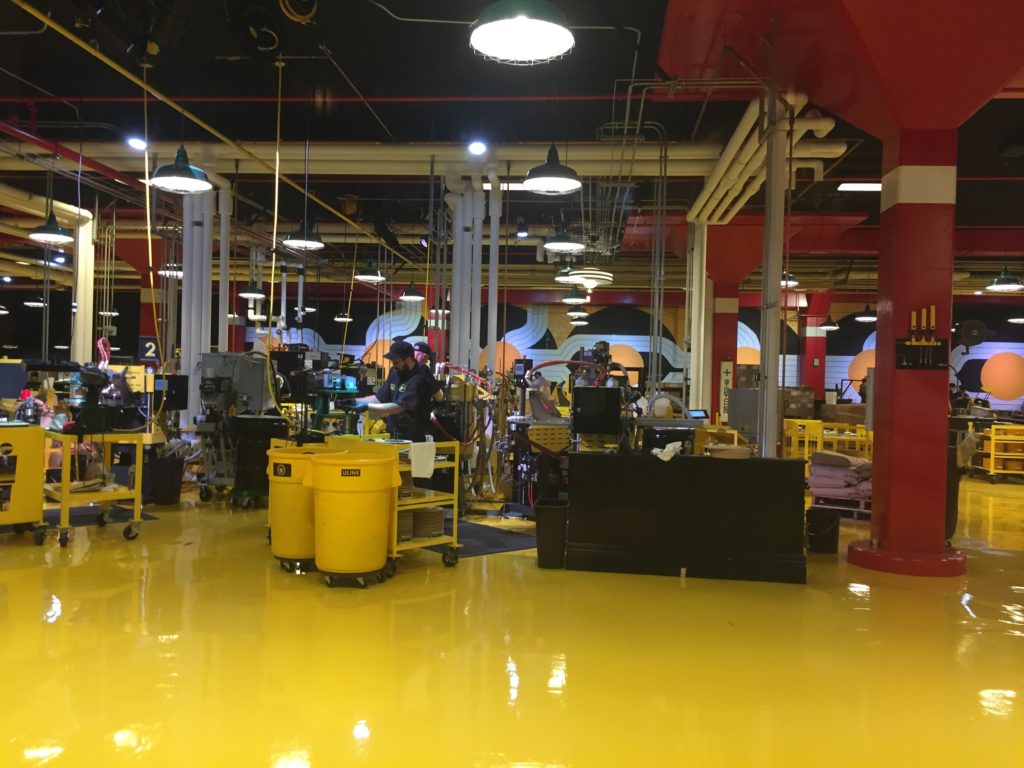 Not so many years ago, when people came to visit us in Detroit, we prayed they would only be in town for just a couple days. Because once you got past Greenfield Village, Hitsville U.S.A., and the Ford Rouge Plant, it was a scramble to figure out what to do next.
Not so many years ago, when people came to visit us in Detroit, we prayed they would only be in town for just a couple days. Because once you got past Greenfield Village, Hitsville U.S.A., and the Ford Rouge Plant, it was a scramble to figure out what to do next.
Not so today. Detroit has become a destination. In fact, Lonely Planet – a respected travel site – recently named Detroit as the #2 destination in the world to visit.
Even I’m not that euphoric about Detroit – now being called “The Comeback City” – but it’s hard not to be prideful of my hometown and how it’s gone from “The Murder Capital” to a place where people from around the world are now putting it on their travel lists.
A few weeks back, we had out-of-towners to entertain, and one of my first stops was Canfield Street down by Wayne State University. It’s another neighborhood on the comeback trail, largely because of the presence of Third Man Records and Shinola – two destinations that not only symbolize a renaissance, but also a return to the basics.
Third Man (pictured above) is Jack White’s record label, and his store is loaded with merch and music. But the real attraction is a record pressing plant in a massive space in the back of the building where you can watch vinyl albums being made right before your very eyes.
It’s symbolic of the analog ascent taking place over the past decade. Walk two doors down, and you’re standing inside the exciting Shinola store, where everything from high-end watches to bicycles are for sale as throngs enjoy looking at beautiful new products being built in Detroit.
And one of the most exciting items offered by Shinola is the Runwell turntable – which you can add to your sound system for just $2,500. It’s a sleek machine that connects its owner to the music in a tactile way you simply can’t recreate with mp3 files on your iPad or laptop.
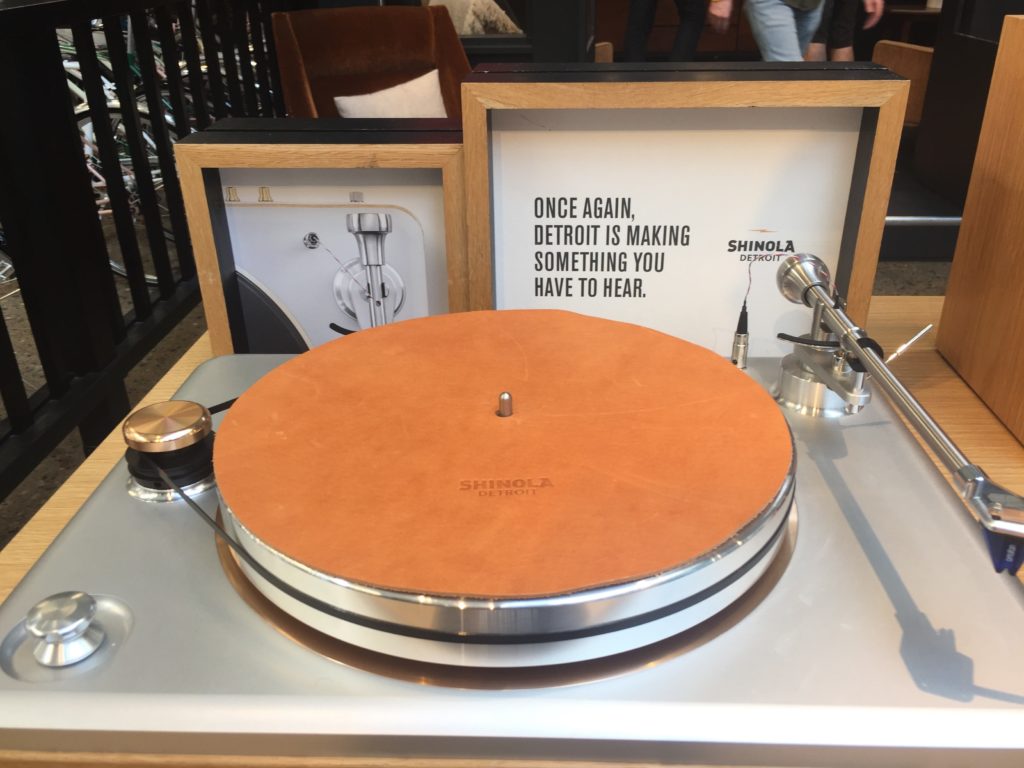 So, what’s the vinyl resurgence all about? In yesterday’s New York Times, David Sax penned “Our Love Affair With Digital Is Over,” a piece that addresses how old school media and gadgets are finding their way into people’s homes.
So, what’s the vinyl resurgence all about? In yesterday’s New York Times, David Sax penned “Our Love Affair With Digital Is Over,” a piece that addresses how old school media and gadgets are finding their way into people’s homes.
He talks about how the “Digital Revolution” has brought about a certain buyer’s remorse. We’re anxious when our smartphones aren’t in our palm, and many admit addiction problems. Social media has become a hot bed of fake news and privacy concerns. And now with autonomous cars being just a few years away, many drivers are already suspicious of this fast-moving technology.
As Sax points out, analog – like Detroit – is in the midst of a comeback. More Americans are buying printed books, as well as vinyl records. Sax notes, “…younger consumers who never owned a turntable and have few memories of life before the internet drive most of the current interest in analog, and often include those who work in Silicon Valley’s most powerful companies.”
That squares with research we continue to conduct among younger generations. In fact, we saw this up close and personal in this year’s “Millennial Research Project” conducted 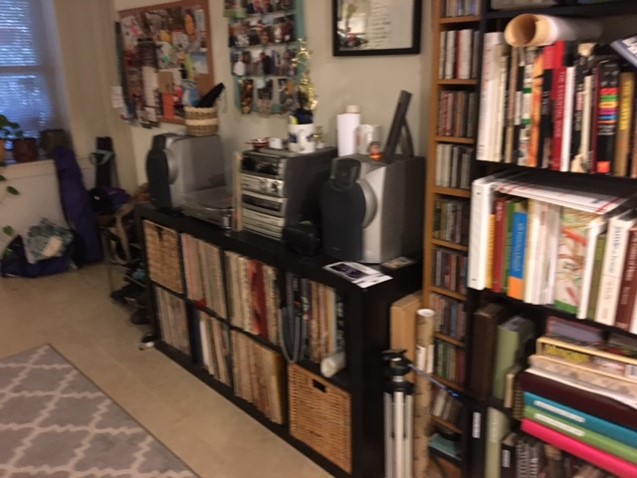 for PRPD with the support of 15 public radio stakeholder stations. We conducted day-long ethnographic interviews among Millennials who listen to public radio in Charlotte, Los Angeles, Chicago, and here in Michigan. And most of these young media consumers had vinyl records and turntables proudly on display in their homes and apartments (see photo at right – a living room loaded with albums and books).
for PRPD with the support of 15 public radio stakeholder stations. We conducted day-long ethnographic interviews among Millennials who listen to public radio in Charlotte, Los Angeles, Chicago, and here in Michigan. And most of these young media consumers had vinyl records and turntables proudly on display in their homes and apartments (see photo at right – a living room loaded with albums and books).
As Sax points out, analog fosters engagement between people. Many of us fondly remember high school and dorm room conversations (OK, debates) with friends as we needle-dropped entire albums and pored over liner notes and album art, discussing the quality of the music and the people making it.
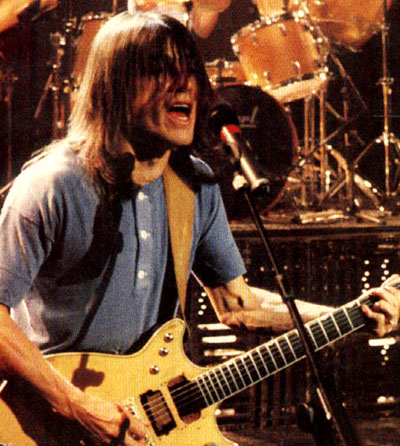 That came to mind over the weekend, as we got the news that two bigger-than-life analog guys passed away.
That came to mind over the weekend, as we got the news that two bigger-than-life analog guys passed away.
First, rock n’ roll lost another of its prime influencers, AC/DC guitarist Malcolm Young, a guy you could argue had analog sensibilities.
It is noteworthy the band’s signature sound eschewed drum machines, synths, and other digital sweetening enhancements. At its roots, AC/DC was always an economical band, tactile, and simple. It wasn’t the least bit difficult for the band to replicate its sound in concert because it was always about a couple guys playing power riffs. The band never had a “disco phase,” not did they ever record ballads that might guarantee Top 40 airplay. It was basic analog rock n’ roll.
And then there was the passing of Robert D. Raiford, irascible curmudgeon-in-residence on the nationally syndicated “John Boy & Billy Big Show.” Raif 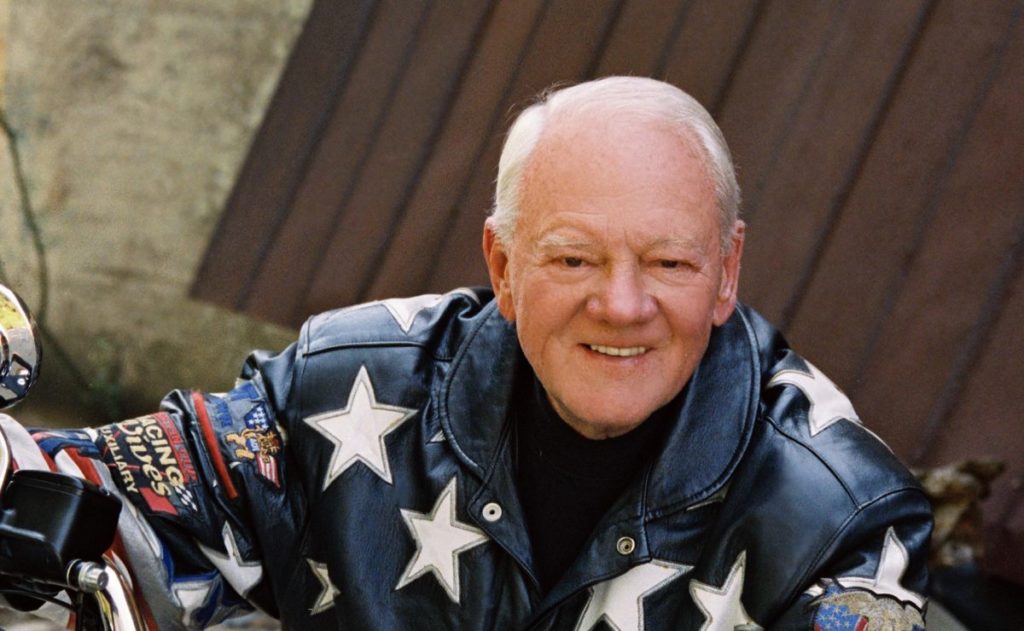 was 89 years-old, and manned the news desk on the show for decades. The unlikely pairing of a rock n’ roll pair of jokesters with a news anchor who once worked next to Walter Cronkite seemed out of place when GM Steve Godofsky and PD Bob Chrysler made the unorthodox move way back in the ’80s when the show was only heard on WRFX/Charlotte.
was 89 years-old, and manned the news desk on the show for decades. The unlikely pairing of a rock n’ roll pair of jokesters with a news anchor who once worked next to Walter Cronkite seemed out of place when GM Steve Godofsky and PD Bob Chrysler made the unorthodox move way back in the ’80s when the show was only heard on WRFX/Charlotte.
But it took, and Raiford’s tell-it-like it-is homespun style mixed in with his voice of authority was must-listen radio for many years. A wonderful tribute by Mark Washburn recently ran in Thr Charlotte Observer, reminding us that Raiford eschewed computers, typing out his daily newscasts and piss-and-vinegar commentaries on an Underwood manual typewriter. It doesn’t get more analog than that.
Raiford was an old school adventurer, riding along well into his eighties on his Harley. I had the opportunity to work with Raif and it was always a thrill. Condolences to “The Big Show” and its millions of listeners.
We learned in the “Millennial Research Study” that it’s not an either/or situation between analog and digital technologies. More often than not, these young people flipped back and forth between new media and old school treasures. They use the tech that’s available to them and that also makes them happy.
And that’s Sax’s conclusion, too. There is no binary choice between analog and digital. Consumers seek out the media and gadgets right in front of them.
And that’s precisely why radio companies need to continue their focus on making it easy for consumers – Millennials and everyone else – to access their content wherever and whenever they are. Sure, everyone has their favorites, but necessity, location, and availability often dictate the gadget and medium they choose.
Come to think of it, listening to my vinyl copy of “Back In Black” seems like the right call today.
- Why “Dance With Those Who Brung You” Should Be Radio’s Operating Philosophy In 2025 - April 29, 2025
- The Exponential Value of Nurturing Radio Superfans - April 28, 2025
- What To Do If Your Radio Station Goes Through A Midlife Crisis - April 25, 2025




Fred,
Thanks for pointing this out. I’ve been observing a kind of split between the camps on this subject. Some radio guys have a “who cares” mentality (maybe the ones who had to back-cue too many over the years!) and the ones who think it’s the new frontier.
But what people really love about dropping a record on a turntable is that interaction they get. You can’t listen to a file and browse the liner notes. It’s not the same as holding a 12×12 album cover in your hand.
And while I’m at it….is it time to bring back the vinyl-to-air experience? Some stations have been doing it. Nothing sounds cooler than the thump of a stylus hitting a record, followed by the smooth sound of analog audio. But that’s me.
Bottom line, lets be where our audiences are. Interacting with them on the vinyl resurgence is one place.
Thanks Fred.
Great comments, Jack. I also think records were made to listen to with others. With mp3s, we’re often wearing earbuds or headphones, listening by ourselves.
Yes, a new concept for some who grew up with earbuds in their head: listening to records. Great point.
Appreciate it, Jack.